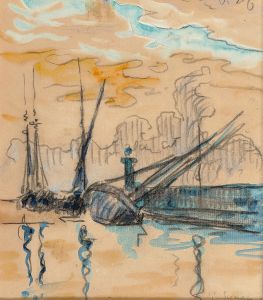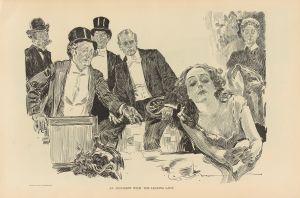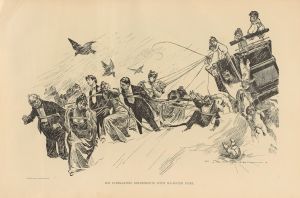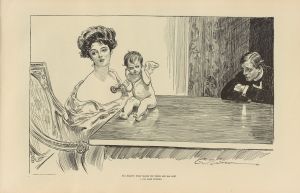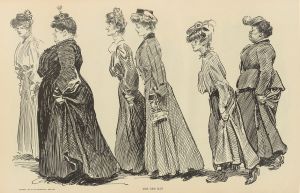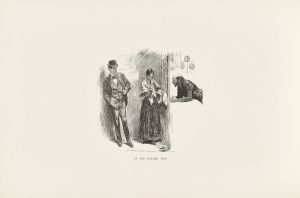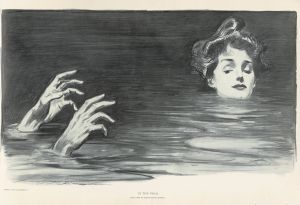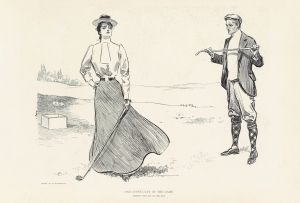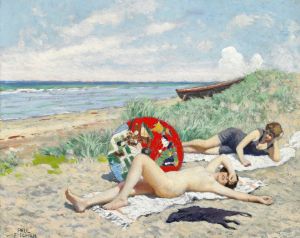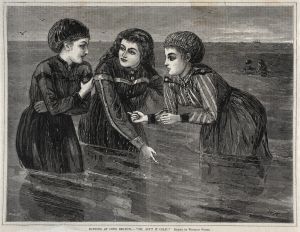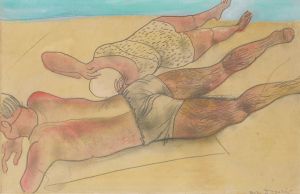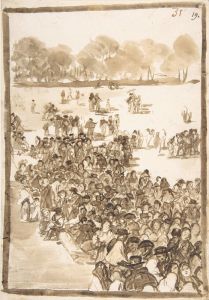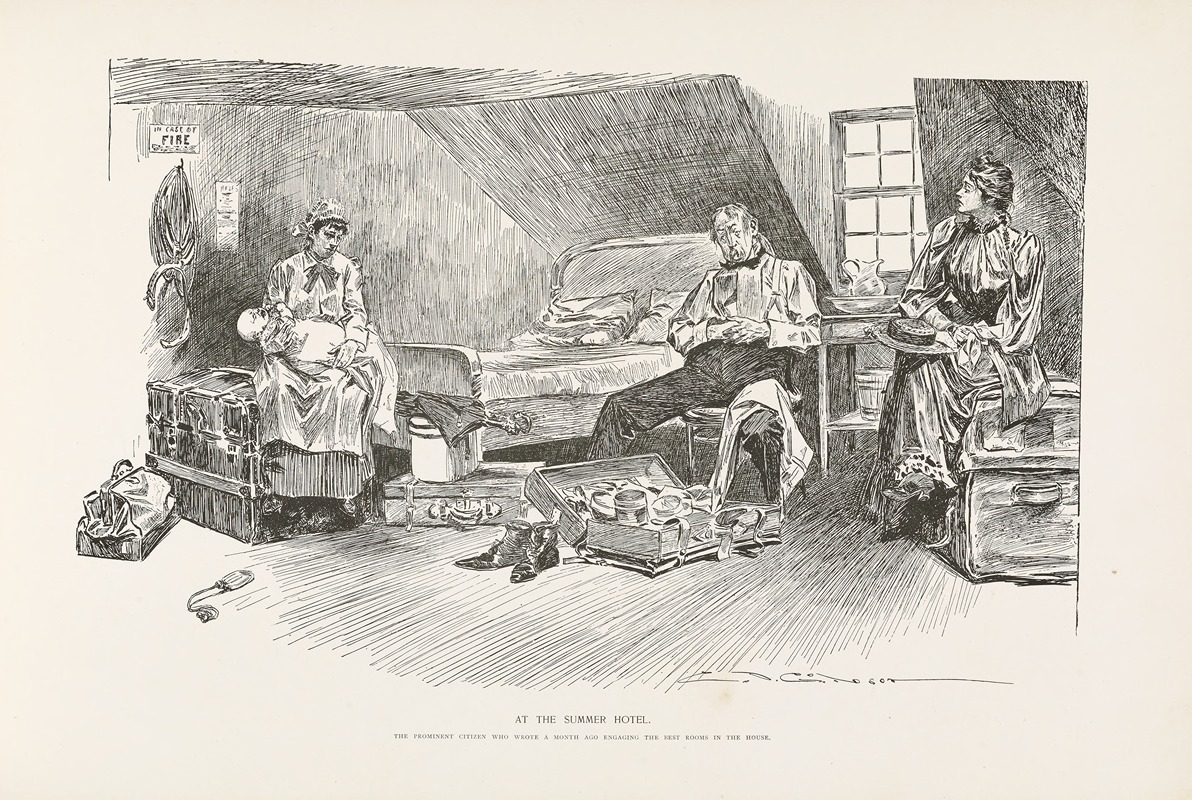
At the summer hotel
A hand-painted replica of Charles Dana Gibson’s masterpiece At the summer hotel, meticulously crafted by professional artists to capture the true essence of the original. Each piece is created with museum-quality canvas and rare mineral pigments, carefully painted by experienced artists with delicate brushstrokes and rich, layered colors to perfectly recreate the texture of the original artwork. Unlike machine-printed reproductions, this hand-painted version brings the painting to life, infused with the artist’s emotions and skill in every stroke. Whether for personal collection or home decoration, it instantly elevates the artistic atmosphere of any space.
Charles Dana Gibson was an influential American illustrator, best known for creating the iconic "Gibson Girl," a representation of the idealized American woman at the turn of the 20th century. His work captured the spirit and style of the era, and his illustrations were widely published in magazines such as Life, Scribner's, and Harper's. One of his notable works is "At the Summer Hotel," which exemplifies his keen eye for social commentary and his ability to capture the nuances of upper-class American life during this period.
"At the Summer Hotel" is a black-and-white illustration that showcases Gibson's signature style, characterized by detailed line work and a focus on the social dynamics of the time. The scene typically depicts a group of elegantly dressed men and women gathered in a luxurious summer hotel setting, engaging in leisurely activities. The illustration captures the essence of the social elite's lifestyle, highlighting themes of leisure, fashion, and the subtle interactions between men and women.
Gibson's work often reflected the changing roles of women in society, and "At the Summer Hotel" is no exception. The women in the illustration are portrayed as confident and fashionable, embodying the independence and sophistication associated with the "Gibson Girl." This portrayal was significant during a time when women were beginning to assert more independence and challenge traditional gender roles.
The setting of a summer hotel was a popular motif in Gibson's work, as it represented a space where the upper class could retreat and socialize away from the hustle and bustle of city life. These hotels were often located in picturesque locations and offered a range of recreational activities, from tennis and croquet to boating and dancing. In "At the Summer Hotel," Gibson captures the leisurely atmosphere and the social rituals that defined these retreats.
Gibson's illustrations were not just artistic expressions but also social commentaries. Through his work, he often critiqued the superficiality and pretensions of the upper class, using humor and satire to highlight the absurdities of their social customs. "At the Summer Hotel" can be seen as a reflection of this approach, as it subtly pokes fun at the characters' preoccupations with appearance and status.
The popularity of Gibson's work, including "At the Summer Hotel," contributed to the widespread recognition of the "Gibson Girl" as a cultural icon. His illustrations influenced fashion, beauty standards, and even the way women were perceived in society. The "Gibson Girl" became synonymous with the modern, independent woman, and her image was emulated by women across the United States.
In summary, "At the Summer Hotel" by Charles Dana Gibson is a quintessential example of his illustrative style and social commentary. Through this work, Gibson captured the elegance and complexity of upper-class American life while also reflecting the evolving roles of women in society. His illustrations remain a valuable historical record of the cultural and social dynamics of the early 20th century.





